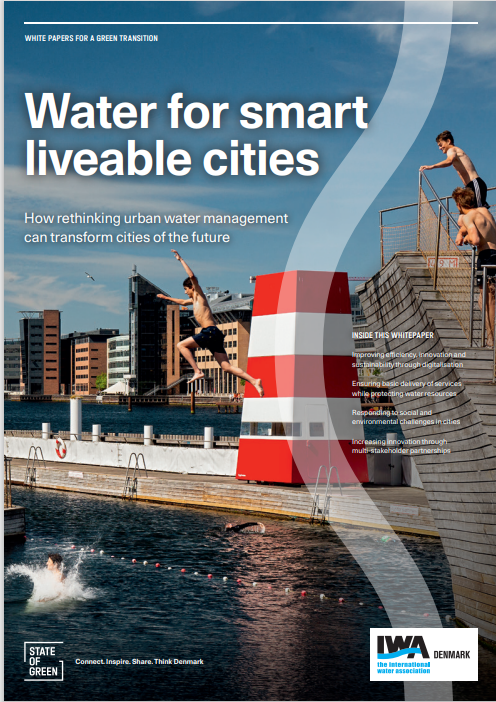11. Copenhagen’s first climate-resilient neighbourhood, Denmark
An existing neighbourhood in Copenhagen has since 2013 undergone a transformation to become more resilient to the effects of climate change such as strong and heavy rainfall. Once completed, the transformation will also result in green, beautiful urban spaces for the local residents to enjoy.
Principles
Unlike most of Copenhagen, the neighbourhood of Skt. Kjelds quarter in the North-Eastern part of the city is sitting on an incline, sloping down towards the harbour. Therefore, the main purpose is to retain surface water in the area and infiltrate as much rainwater to the groundwater as possible. Storage capacity is used during heavy rain and cloudbursts. During cloudbursts the excess water is transported away from the neighbourhood to places where the risk of damage is minimised. The overall aim for the neighbourhood is to have flexible surface solutions that can manage daily rainfalls locally. During cloudbursts, the surface solutions are combined with a conventional split rainwater sewer system, which ensures a
controlled transport of the rainwater to the nearest harbour. The transformation has been carried out in different sections:
Taasinge Plads
The transformation of Taasinge Plads was completed in 2014. The area is now a green pocket park that demonstrates how to manage three different types of surface water fractions: Rainwaterfrom roofs, which is used for recreational use and play, rainwater from zero traffic areas, which is used for local infiltration and finally, surface water from roads, which is infiltrated through filter media. As salt is used as ice control in the winter, the road water does not infiltrate the groundwater, but is transported to the harbour. During cloudbursts, an integrated open storage capacity is taken in use and works as a blue element in the pocket park.
Bryggervangen and Skt. Kjelds Plads
Bryggervangen and Skt. Kjelds Plads was finished in 2019 and is a long stretch of road (34,900 m2 and a roundabout), where green spaces, urban nature and linked surface water solutions have replaced asphalt and pavements. The applied urban nature is inspired by the characteristic wet/dry biotopes found in Copenhagen and uses their processes in a rational way to treat and retain rainwater. Surface water from roads is handled by first-flush solutions, which direct the polluted initial surface runoff (first flush) stemming from heavy rainfall to the existing sewer system, whereas the cleaner, ‘second flush’ is directed to green surface water solutions. This can be turned off in the winter to avoid salt intrusion into the green areas.
(Courtesy: City of Copenhagen and HOFOR (Greater Copenhagen Utility). Strategic design advisors for the master plan of the area: THIRD NATURE. Advisors for Taasinge Plads: LYTT Architecture and WSP. Advisors for Bryggervangen & Skt. Kjelds Plads: SLA and NIRAS.)



























